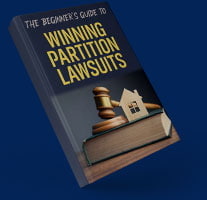Thousand Oaks Partition Lawyers
The City of Thousand Oaks is the second largest in Ventura County with almost 70% of homes being owner-occupied. The Thousand Oaks housing market is somewhat competitive. Homes in Thousand Oaks receive 4 offers on average and sell in around 39 days. The median sale price of a home in Thousand Oaks was $970K last month, down 13.9% since last year. The median sale price per square foot in Thousand Oaks is $493, down 5.6% since last year. This suggests that many Thousand Oaks homes are jointly owned. As such, residents of Thousand Oaks who own homes may face disputes with co-owners. Generally, the best Thousand Oaks Partition Lawyers usually find partition action to be the best remedy for disputing co-owners in four broad categories:
- Split ownership real estate dispute;
- Brother-Sister real estate dispute;
- Investor-Investor real estate dispute; and
- Significant other real estate dispute
What is a Partition Action in California?
Partitions are lawsuits that split up the property between multiple co-owners so that each can take their equity out of the home. The prototypical partition are between siblings, former romantic partners, or business partners. Both own parts of the property, but only one wants to end the relationship and take their money out. Partitions enable this to happen, usually ending with a court-ordered sale of the subject property.
Basically, any person who is an owner of real estate can bring a partition action in California. Code of Civil Procedure section 872.710, subdivision (a), states “A partition action may be commenced and maintained by any…owner of…such property.” California Civil Code section 872.210 provides a property owner with the “absolute right to partition” absent a valid waiver. Thus, a partition action can be brought by anyone who no longer wants to own jointly owned real estate, other than spousal property.
Generally, a partition action cannot be stopped absent a valid waiver. The instances in which a court has found a valid waiver have generally involved some sort of written contract or adverse possession of property. As such, many parties try to stop a partition action through mediation, or a buy-out agreement. In most instances, the parties to a partition action can benefit from creative lawyering by those who are familiar with the different options for resolving real estate disputes. The best Thousand Oaks Partition Lawyer will be able to share information on this process with you.
What are the steps in a Partition Action?
Generally, the first step in the partition lawsuit process is not a lawsuit, but an earnest attempt to resolve the matter informally, such as through a partition agreement. Only when it is clear that litigation is the only option, is it clear that a partition lawsuit is appropriate.
When it is clear that a partition lawsuit is necessary, then the process begins with the filing of a complaint in the county where the property is located. There are several technical requirements for the partition complaint, and many important steps that must be taken during the lawsuit to ensure that the process is managed effectively.
In a partition lawsuit, there are generally four different steps. First, the court determines each party’s ownership interests. Second, the court will decide on the manner of sale. Third, the court will order the property be sold. Fourth, the proceeds from the sale will be divided between the parties based on their relative contributions to the property.
While some may believe that inherited property cannot be partitioned, this is incorrect. Instead, when the property is owned as the result of an inheritance, there may be an additional step for an appraisal, and a right of first refusal, as provided by the Uniform Partition of Heirs Act. Under this act, where a co-tenant requests partition by sale, the law gives the non-partition owner the option to buy all of the interests of the co-tenants who requested the sale. A top Thousand Oaks Partition lawyer will be familiar with the process.
Can you recover attorneys’ fees in a partition action?
Section 874.040 gives courts only two options in apportioning the costs and fees of partition: by ownership interest or by some other equitable apportionment. (see Finney v. Gomez (2003) 111 Cal.App.4th 527, 545 (Finney).)
Notably, appellate courts have found the statutory language of Section 874.040 to give courts broad and equitable discretion. (Lin v. Jeng (2012) 203 Cal.App.4th 1008.) This sentiment that the record must support the allocation of attorney’s fees in an amount greater than disclosed by title is echoed in Stutz, where the appellate court held the trial court erred in apportioning 100% of the attorney’s fees and costs of a partition to the respondent. The appellate court recognized that trial courts are free to apportion fees and costs in an equitable manner yet held that the record must support such an arrangement in “any manner other than according to the respective interests of the parties in the property.” (Stutz, 122 Cal.App.3d 1, 5.)
For example, where a party refuses to simply resolve the issue where the other party was willing to sell, then a court has the authority to order a different amount of fees than disclosed by title. (Forrest v. Elam (1979) 88 Cal.App.3d 164, 174.) In other words, the resistance to selling the property may be a factor that a court considers in awarding attorneys’ fees in a partition action. A knowledgeable Thousand Oaks Partition Attorney will be able to give you good advice on these issues.
What are claims for “contribution”?
Code of Civil Procedure section 874.140 states that the “court may, in all cases, order allowance, accounting, contribution, or other compensatory adjustments among the parties according to the principles of equity.”
The court in Hunter v. Schultz (1966) 240 Cal.App.2d 24 stated that the payments for interest, taxes, and insurance made by any co-tenant could be subject to reimbursement. These claims for reimbursement are commonly known as “offsets” in a partition action.
Further, the court under Milian v. De Leon (1986) 181 Cal.App.3d 1185, announced that a co-tenant who expends money for the preservation of the property, or with the [acceptance] of their co-tenant(s), is entitled to reimbursement for those expenditures before the division of the proceeds among the property owners.
That is, the general rule is that compensatory adjustments are appropriate for improvements that enhance the value of the property for all owners’ benefit. (see Wallace v. Daley (1990) 220 Cal.App.3d 1028, 1035-1036.) An experienced Thousand Oaks Partition Attorney will be intimately familiar with these matters.
A Partition Case Study: Raftari v. Jafari
When the court decides that a party is entitled to a partition, the court issues an interlocutory judgment determining each party’s interest and order the partition of the property. (CCP § 872.720(a).) The interlocutory judgment is appealable. (CCP § 904.1(a)(9)). The following paragraphs discuss how the court determines whether an interlocutory judgment was precluded under the principles of res judicata in Raftari v. Jafari (2007) 2007 WL 172117.
In Raftari, Francis Raftari filed a partition action for a home in Woodland Hills in July 1999 after a 1998 judgment that found that Amir Jafari was the record and true owner of the property subject to Raftari’s equitable right to one half of Jafari’s net equity in the home.
Raftari’s complaint alleged that she was the equitable owner of an underlying one-half interest in the property according to the1998 judgment and therefore sought partition in kind or sale of the property. Jafari filed an answer that admitted that allegation. In November 2000, the trial court ordered Jafari to sell the property to Raftari and in December 2000, it directed Jafari to execute a grant deed and quitclaim deed transferring the property to Raftari. These deeds were not to be recorded until Raftari placed funds for buying the property in escrow. In January 2001, Jafari vacated the property and gave the keys to Raftari pursuant to the order. In April 2001, the trial court entered a judgment that directed escrow be closed and apportioned the funds from the sale among the lienholders.
However, the sale of the property was not completed, and disputes arose between Raftari and Jafari. Jafari then filed a motion for equitable relief, a temporary restraining order, and the appointment of a referee. Jafari alleged that Raftari misrepresented her ability to buy the property, encumbered the property with liens, and failed to pay property taxes after she took possession of the property. With consent of the parties, the trial court appointed a referee.
After the referee filed his recommendations, the trial court entered a judgment declaring Raftari to be the sole owner of the property and the prevailing party in the action. The judgment denied Jafari any interest in the property and directed Raftari to pay the amount specified in the outstanding loans. Jafari appealed.
In his appeal, Jafari contended that (1) the 1998 judgment precluded the final judgment of partition action under principles of res judicata, (2) Raftari lacked standing to initiate the partition action, and (3) the referee in the partition action improperly declined to address Jafari’s motion for equitable relief.
The Court of Appeal for the Second District began its opinion analyzing the res judicata argument. The Court notes that under the res judicata doctrine “final judgments and determinations on the merits bind the parties to the pertinent litigation” (7 Witkin, Cal. Procedure (4th ed. 1997) Judgment, §§ 280-281, pp. 820-821; id. § 397, pp. 967-968). When a trial court determines that a plaintiff has the right to partition, the trial court makes an interlocutory judgment determining the interest of the parties (CCP § 872.720). This interlocutory judgment is appealable (CCP § 904.1). Since the interlocutory judgment is appealable, it becomes final and conclusive for purposes of res judicata after lapse of the time for appeal.
Therefore, the Court of Appeal found that the doctrine of collateral estoppel barred Jafari from relitigating issues that were raised, submitted for, and determined by the trial court in connection with the 2001 judgment. The record showed that the question of Raftari’s entitlement to partition as a co-owner of the property was raised and submitted to the trial court. Raftari’s complaint alleged she owned an undivided equal interest and Jafari’s answer conceded that the 1998 decision accorded Raftari that interest.
The record also established that the trial court determined Raftari was entitled to partition as a co-owner despite Jafari’s failure to incorporate into the record any pleadings or transcripts illuminating the manner in which the trial court made this determination before the April 2001 judgment. Since the trial court determined that the 1998 decision accorded Raftari an interest in the property that entitled her to seek partition, Jafari’s contentions on appeal regarding these matters failed.
As to Jafari’s contention that the referee improperly decided that his motion for equitable relief was moot and that the trial court erred in adopting that recommendation, the Court of Appeal concluded that Jafari had not provided a record or argument sufficient to establish an error regarding those matters. Since an appellant must affirmatively show an error on appeal, an issue is forfeited if the appellant does not present arguments with citation to appropriate legal authorities on the issue. (Horowitz v. Noble (1978) 79 Cal.App.3d 120, 138-139; 9 Witkin, Cal. Procedure (4th ed. 1997) Appeal, § 594, pp. 627-629.)
Here, the Court of Appeals found that Jafari had provided an inadequate record to establish error regarding his motion for equitable relief. Jafari’s argument that the referee and trial court erred in ruling on the motion was unsupported by legal argument. Therefore, the Court of Appeal found that the contention was forfeited and affirmed the trial court’s judgment.
Courts may find that res judicata precludes a judgment for partition. Here however, the record showed that the 1998 judgment gave Raftari an interest in the property that she then used to seek a partition. By conceding that the 1998 judgment gave Raftari that interest rather than appeal that judgment, Jafari forfeited any argument to the contrary. Therefore, instead of Raftari’s argument being precluded under this doctrine, Jafari’s contentions were precluded under collateral estoppel.
How the Underwood Law Firm Can Help
A court’s determination of ownership interests in a property depends on the facts and circumstances of each particular case. Factors such as agreements and who pays for certain expenses for the property can ultimately affect the outcome of a partition case. If you are considering partition as an option, or find yourself defending one, then you may benefit from good legal advice on the topic. Please contact Underwood Law Firm, P.C., for an initial consultation.
Learn more here.
Contact Us Today
4590 MacArthur Boulevard, Suite 500
Newport Beach, CA 92660
949.347.5000









